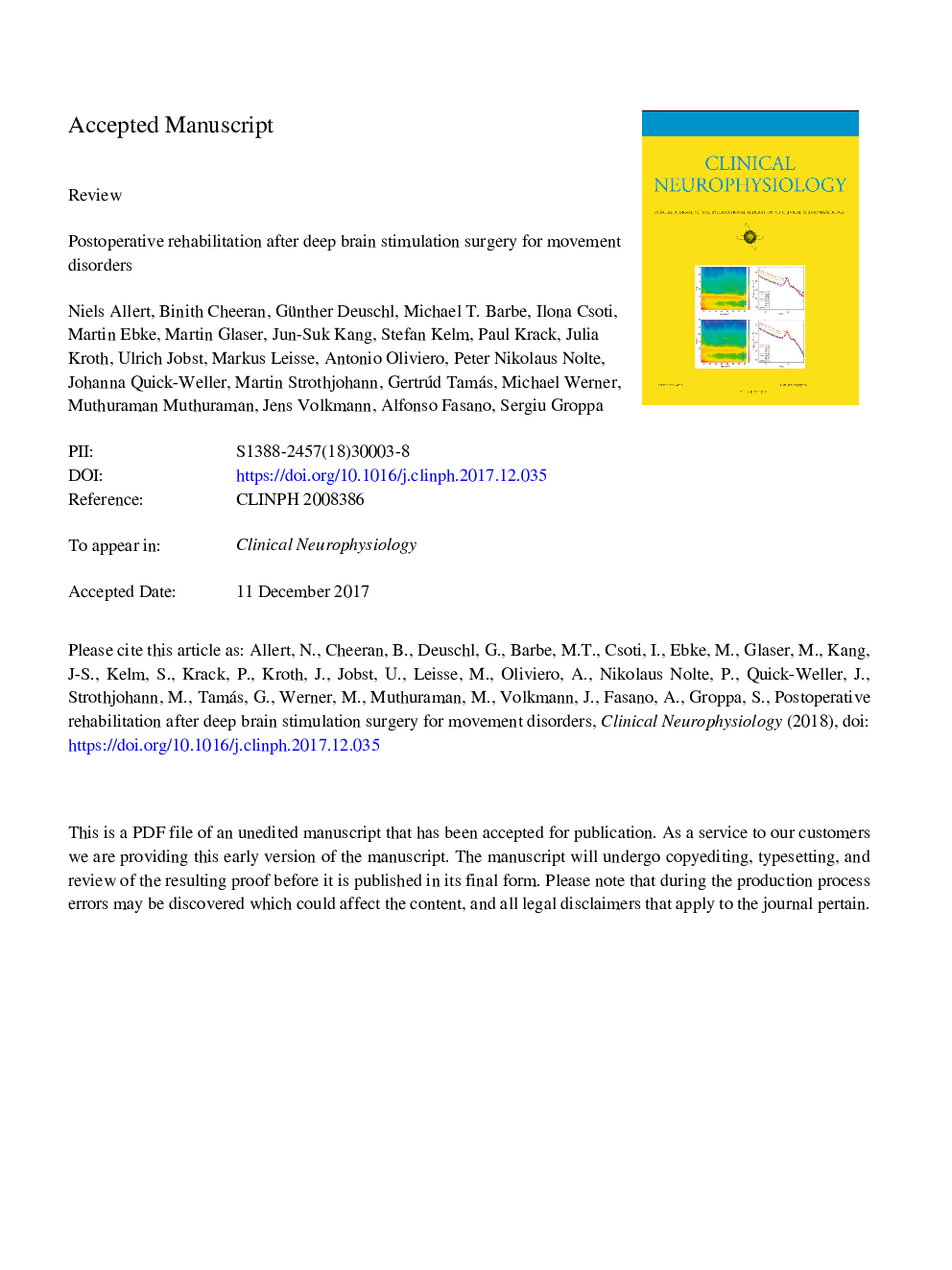| Article ID | Journal | Published Year | Pages | File Type |
|---|---|---|---|---|
| 8682715 | Clinical Neurophysiology | 2018 | 29 Pages |
Abstract
Deep brain stimulation (DBS) is a highly efficient, evidence-based therapy for a set of neurological and psychiatric conditions and especially movement disorders such as Parkinson's disease, essential tremor and dystonia. Recent developments have improved the DBS technology. However, no unequivocal algorithms for an optimized postoperative care exist so far. The aim of this review is to provide a synopsis of the current clinical practice and to propose guidelines for postoperative and rehabilitative care of patients who undergo DBS. A standardized work-up in the DBS centers adapted to each patient's clinical state and needs is important, including a meticulous evaluation of clinical improvement and residual symptoms with a definition of goals for neurorehabilitation. Efficient and complete information transfer to subsequent caregivers is essential. A coordinated therapy within a multidisciplinary team (trained in movement disorders and DBS) is needed to achieve the long-range maximal efficiency. An optimized postoperative framework might ultimately lead to more effective results of DBS.
Related Topics
Life Sciences
Neuroscience
Neurology
Authors
Niels Allert, Binith Cheeran, Günther Deuschl, Michael T. Barbe, Ilona Csoti, Markus Ebke, Martin Glaser, Jun-Suk Kang, Stefan Kelm, Paul Krack, Julia Kroth, Ulrich Jobst, Markus Leisse, Antonio Oliviero, Peter Nikolaus Nolte, Johanna Quick-Weller,
